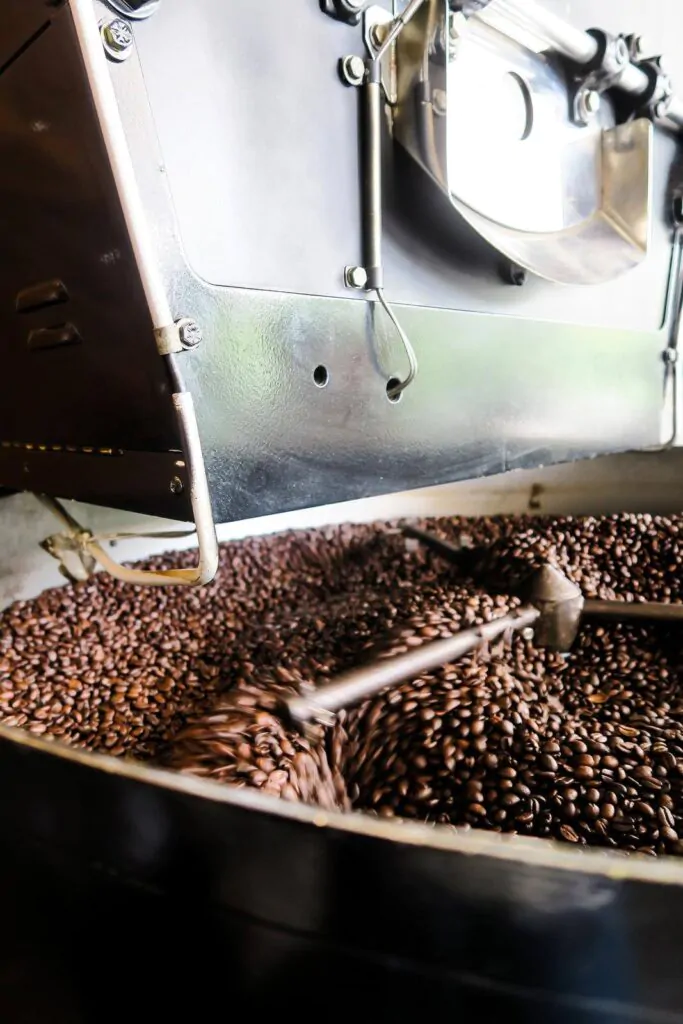Are you wondering why there is sludge in your coffee cup after you finish drinking? Read on to learn if it is something to be concerned about and why sludges occur!

It was funny when I first encountered sludges. My friend and I ordered a simple French press coffee, and I found some residue at the bottom of my cup when we were finishing up. I thought it was just more coffee, so I enthusiastically gulped it all up; imagine the horror on my friend’s face when she saw me do that.
While sludges are generally harmless, they can be an inconvenience to your coffee drinking experience as their rough texture will scratch your tongue and throat. But why do sludges remain in your coffee cup?
- 1. The Coffee Beans Are Poor Quality
- 2. The Coffee Bean Was Flame-Roasted
- 3. The Coffee Beans Were Ground Unevenly
- 4. Your Coffee Grinder Is Under Maintained
- 5. You Are Using Tap Water For Brewing
- 6. Your Paper Coffee Filters Are Low-Grade
- 7. You Have A Poor Quality Coffee Plunger
- FAQs On Sludge In My Coffee Cup
1. The Coffee Beans Are Poor Quality
Let us start with the product itself. Low-quality coffee beans are softer and easier to grind than high-quality ones. Because of this, some of the grounds will be finer than usual and will go through the filter.
Sludge isn’t the only drawback to poor coffee bean quality. It can also make your coffee taste stale, bitter, and woody.
My advice is to check the quality of the coffee beans through smell or touch. High-quality ones are aromatic and leave oils and small residues when touched. Also, be on the lookout for a roast date in the packaging. This is a great indicator if it is still fresh!
2. The Coffee Bean Was Flame-Roasted
Sludge is composed of two things: fine coffee residues and oil. Coffee beans roasted over a flame, especially when you roast them campfire style, tend to secrete more oil. These oils will stick onto your beans until you grind, and if you grind unevenly, the fine granules covered in these oils will find their way through the bottom of your cup.

If you want to minimize sludges, look for slow-roasted ones, preferably via a drum roaster or an air roaster, as these methods tend to create even roasts on every bean.
Our drum roaster vs. air roaster guide might be helpful.
3. The Coffee Beans Were Ground Unevenly
It won’t matter if your coffee beans are high quality or if the roasting process is perfect if your grounds are not uniform. There are several reasons for uneven grounds, but it is most likely because of poor quality coffee beans or substandard coffee grinders.
Cheaper coffee bean brands tend to be uneven in bean size from the get-go. You can already guess what problems it will cause during the grinding process. On another note, low-cost grinders often have thin or blunt blades, resulting in uneven grinds.
I advise investing in a quality grinder, preferably the branded ones, as it will go a long way, even if it might cost you a bit. If you are looking for something consistent and beginner-friendly, opt for the burr grinder, especially if your preferred brewing method is the French press, which calls for a uniform coarse grind.
Check out our buying guide on the best coffee grinders for your home!
4. Your Coffee Grinder Is Under Maintained
Don’t wait for your sludges to appear in your coffee cup before deciding to clean your grinder. Coffee beans have oil; sometimes, some residues get stuck in the grinder during the grinding process.
It may mix with your next batch of grounds and result in a coffee sludge. These residues might go rancid, and your java will taste bad when it gets brewed up with your next cup of Joe. The simple solution would be to keep your grinder well-maintained, preferably by washing it after every use.
5. You Are Using Tap Water For Brewing
One reason why coffee makers get clogged is because of scaling. Scaling happens when minerals from tap water build up.
The same effect can also cause sludges. Oil from your ground coffee beans will embrace those minerals, resulting in an even thicker sludge. You don’t have to remove all the minerals, as magnesium and calcium still contribute to making your coffee flavorful.
My suggestion is to opt for purified, filtered, or even distilled water though the latter is my least recommended as its lack of minerals will result in an acidic and more bitter coffee. If you have access to spring water and the budget for it, I urge you to go for it!
6. Your Paper Coffee Filters Are Low-Grade
Low-quality paper filters are thin and have a tissue-like texture, allowing the small particles to go through. Additionally, it will give your cup of Joe a woody paper-like flavor. You will know it is poor quality if you wash it before use, and it becomes flimsy.

Make sure you have the right size, shape, and material that goes best with your brewing method.
Our guide on the best coffee filters can assist you during this process!
7. You Have A Poor Quality Coffee Plunger
In the case of a coffee plunger, you will notice that the mesh or the metal filter screen is rickety and entangles easily. Quality plungers tend to have a smoother, finer, and sturdier mesh that connects well with the plates, so be on the lookout for these attributes the next time you shop for one!
FAQs On Sludge In My Coffee Cup
Can You Remove Coffee Sludge?
It is doable but not an assurance. You might just remove the oil that makes it a sludge, but there will be moments when you encounter coffee sediments.
These are the dry, sand-like residues you can find after you finish a cup. I will much prefer having these granules over the oily sludge.
Can Coffee Sludge Affect Your Health?
Coffee oils contain cafestol and kahweol, diterpene compounds that are associated with raising bad cholesterol levels. While these oils contribute to the coffee’s health benefits, it isn’t advisable to ingest it in its gooey, concentrated form. Throw away the sludge.
Is Sludge Coffee Made Of Sludge?
This Alaskan beverage is just called sludge coffee, but it is actually made from brewed coffee with hot milk topped with foam milk and vanilla extract or sugar to taste. It is delicious and safe to drink!
Are There Any Uses For Coffee Sludge?
Sludges are sometimes used as an ice cream garnish or to add texture to coffee-flavored ice cream. You can also use it as fertilizer for your plants!
